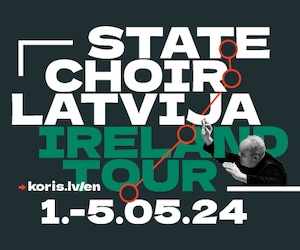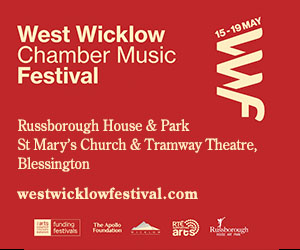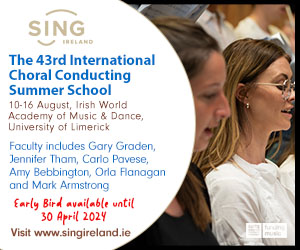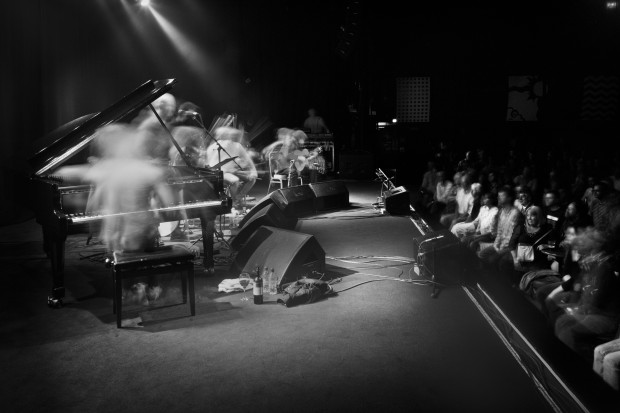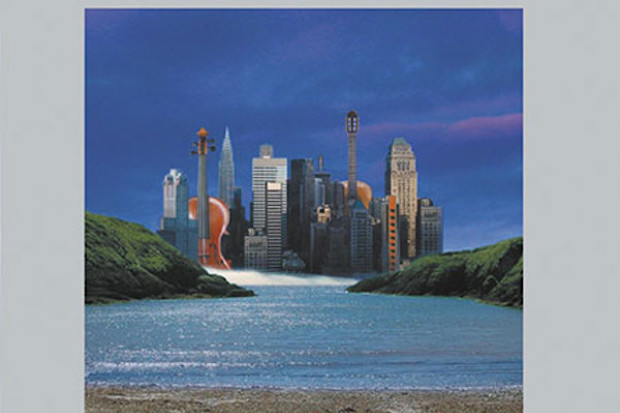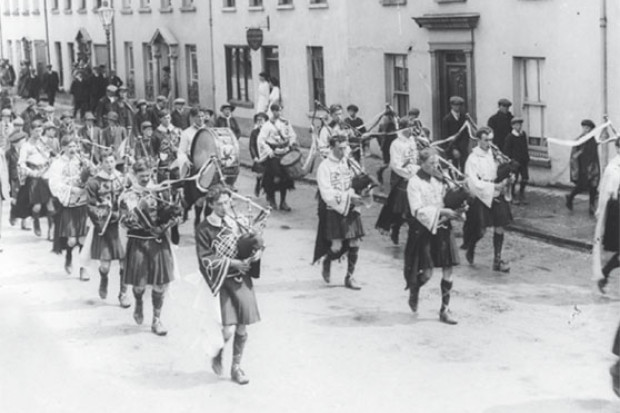Listen Here, Pipers: Uilleann Pipe Teaching Today
One of the most notable developments in Irish traditional music over the last twenty years has been the increase in the level of tuition available. The demand for uileann pipe lessons, in particular, has risen markedly. When I first attended Scoil Samhraidh Willie Clancy in 1977 there were three piping classes; this year there were sixteen, catering for some ninety students.
The increased availability of quality tuition is obviously to be welcomed. It is ironic, then, that the increased availability of personal tutoring may have contributed to what I regard as a serious lacuna in the whole learning process of uileann piping. Arguably, this has resonances across the whole spectrum of traditional music. From my own teaching experience, it appears that a significant number of students attending piping classes rarely listen to the seminal recordings associated with the instrument. I would go as far as saying that it is the exception rather than the rule to find a piping student who has made a detailed study of the recordings of one or more virtuoso pipers.
In a class of promising players I took earlier this year I asked the students if they had listened to Séamus Ennis’ wonderful recording, Forty Years of Irish Piping. Only one member of the class had done so. I was astonished at this state of affairs. I would have been equally perplexed had they not listened to, for example, the recordings Johnny Doran made for the Irish Folklore Commission which are now available on CD. When I asked this same class what sort of recordings they listened to, with one exception, it turned out they listened largely to groups such as Altan and The Bothy Band. It would appear, then, that the central role of the solo performer in Irish traditional music is not generally as widely known in certain quarters as it deserves to be. The piping of Paddy Keenan (who played with the Bothy Band) has had a major impact on uileann piping over the past thirty years or so. I found it strange that just two students in this same class, had heard his first breathtaking solo album which has recently been re-released on CD by Gael-linn. Unfortunatel, my own experience of this phenomenon is not an isolated one. I know of other piping teachers who have met the very same blinkered approach in classes throughout Ireland and abroad.
Unrealistic expectations
Perhaps one of the main reasons why many of today’s piping students tend not to listen to recordings of the most respected pipers of the past is because they have an unrealistic expectation of what tuition can actually deliver. I would submit that many pipers learning the instrument are prone to believe that they will receive all they need to learn from their class and that it is not necessary to listen to recordings of piping luminaries such as Patsy Tuohey, Séamus Ennis, Willie Clancy, Johnny Doran, Tommy Reck, and so on. I would venture to suggest that this is a curious and unfortunate mind-set. It might be likened to reading only the prescribed texts on an academic course: such an approach will possibly get you through, but you will never shine if you do not read widely around the subject area. Quite apart from the sheer exhilaration and enjoyment experienced from listening to the music of these and other marvellous players, the potential for learning from their recordings is nothing short of colossal. I am not proposing that students should become clones of these players, but to ignore them along with early recordings of marvellous players such as Barney Delaney, Dinny Delaney and Mike Carney, seems to me to be bizarre in the extreme.
Willie Clancy’s recordings
It is a travesty that a significant number of students who attend the piping classes held at Scoil Samhraidh Willie Clancy have listened to little of Clancy’s recordings. In view of this, an increasing number of teachers in recent years have taken to playing recordings of the likes of Willie Clancy in the class and then go on to teach the particular tune. This goes some way to addressing the problem. Nevertheless, I find it difficult to understand the reasoning of any learner of the pipes who takes the time and trouble of attending piping classes at the summer school bearing the name of one of the greatest pipers ever to have been recorded, without bothering to have an appreciation of some of his music in advance. I am not suggesting that everyone who attends the classes at Miltown should have Clancy as their role-model, but I would have thought that curiosity might at least prompt people to check him out before they arrive at the classes.
At this year’s Scoil Samhraidh Willie Clancy, Rónán Browne and Seán Corcoran took a listening class, a fact which indicates that the art of listening to traditional music is as important an aspect of learning the music as practice itself. I find it bewildering that it is necessary to make people aware of this requirement through the medium of a class, but that is also the fact of the matter.
It might also be argued that the whole concept of tradition may start to be eroded, or at the very least, have its basis shifted, if this current trend is to continue. Players such as Séamus Ennis, Willie Clancy and Tommy Reck developed very individual styles of playing, but they were very conscious of the notion of tradition. All three valued the importance of their repertoire and technique. The cornerstone of Ennis’ music was the material and style he acquired from his father who had learnt his music from the likes of Pat Ward and Nicholas Markey. Willie Clancy was fascinated with the music of his fellow Clareman Garret Barry. He died almost two decades before Clancy was born and Willie learnt his music from his own father Gilbert. He was also besotted by the piping of Johnny Doran and Micí Cúmbá Ó Súilleabháin. Tommy Reck made his own of the music of John Potts, he attended classes under Leo Rowsome and went on to develop one of the most individual piping styles of the twentieth century.
Liam O´Flynn’s music is based in the Ennis, Clancy and Rowsome traditions and he is on record as acknowledging the impact their piping had on his playing. He often speaks of his good fortune in having been exposed to these diverse influences within the piping tradition. Were recordings available of Garret Barry, Willie and Tom Rowsome, Pat Ward and Nicholas Markey I have no doubt that he would have spent a considerable time listening to them analysing them and absorbing various facets of the playing of these players who had such a profound influence on his mentors.
In contrast, significant numbers of piping students over recent years have adopted a more passive approach by simply learning whatever their particular tutor presents them with. They seem to believe endless tuition will make them better players. There comes a point when attending classes is no longer necessary and when further progression depends on a player’s own creativity to fashion their own piping voice from their total musical experience. To do this it is necessary to expose oneself to a wide range of styles from the whole instrumental and song tradition, absorbing aspects of the playing of both musicians and singers from the past and from our own time. It is then incumbent on the performer to add their own individual hallmark to those sources which have originally inspired them.
Despite the concerns expressed above, I would like to conclude this piece by saying that, in my view, the general standard of piping in Ireland has never been higher. Nevertheless, the most respected of today’s players have realised the legacy of the masters who have gone before them. While they may not have exclusively based their own particular style on the recorded legacy of the leading players of the past, they have undoubtedly benefitted from their genius and artistry and significantly enriched their own playing accordingly. It is no coincidence that the most highly-respected figures in the world of Irish traditional music generally have been influenced by virtuoso players of the past. By way of example, I would cite Seán Keane, Paddy Glackin, Noel Hill, Dermot MgLaughlin, Liam O’Connor, and Harry Bradley. In view of this, I would urge all pipers to follow their lead.
Published on 1 November 2004
Robbie Hannan is an uilleann piper and is Curator of Musicology at the Ulster Folk and Transport Museum.






